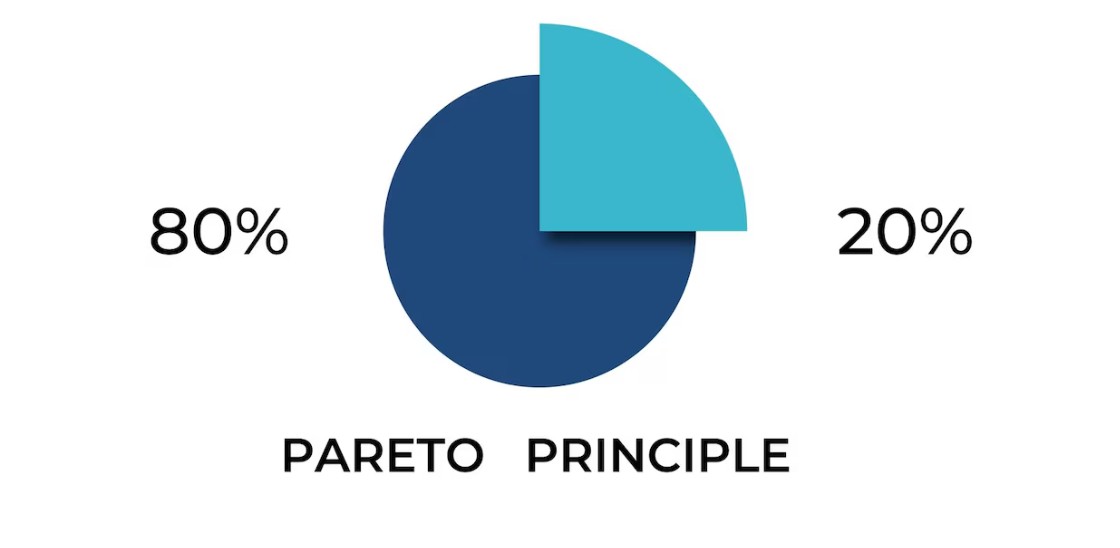Sales compensation has historically been a backward-looking function design the plan, launch it, hope it works, and then review the results at the end...
How Sales Operations Can Activate the Bottom 80% of Reps to Boost Monthly Sales and Build a Scalable Revenue Engine
The 80/20 rule is one of those things that salespeople have largely just accepted as truth. A small number of reps inevitably produce a large portion of revenue. But does this have to be the case? Building a high-performing sales engine that’s predictable and less risky means that Sales Operations leaders must look at ways to motivate that bottom 80% to also be active contributors to hitting revenue targets each month. Here’s how.
Why Fixating on Top Performers Is Risky Business
a. First, let’s establish why the current state isn’t sustainable.
b. Revenue is a roller coaster: A small pool of top performers means a large revenue swing whenever they dip in performance.
c. Morale and retention issues: Average reps get fed up constantly seeing top performers recognized.
d. Slow growth: Your talent pool is small if 80% of reps aren’t stepping up to scale.
Segment the 80% — One Size Doesn’t Fit All
a. Bottom 80% does not mean a homogenous group.
b. The emerging 20%: These are the reps on the cusp of entering the top tier.
c. Solid-average: The tier of reps below that who are steady but not world-beaters.
d. Low performers: Low for a reason or with potential but in the wrong role.
Instead of a one-size-fits-all approach, Sales Operations teams must identify these subgroups and define differentiated strategies for each.
Recalibrate Sales Incentive Plans to Motivate the 80%
a. Sales incentive plans should not be top-heavy.
b. Tiered Payout Structures
The more granular the payout, the more reps have incentives to “keep fighting”. This can be by:
1. Tracking pipeline milestones
2. Tiering thresholds above the 50% mark to reward higher achievers
An example:
Tier 1: 50–70% of quota = 70% payout
Tier 2: 71–99% of quota = 90% payout
Tier 3: 100%+ = 120% payout
Activity-Based Incentives
For newer or average reps, incentivize leading indicators of a closed deal like qualified meetings, demos or proposals. These behaviors, over time, will result in sales.
Example:
Bottom 80% reps at a SaaS company were highly active in prospecting but poor at bookings. Quarterly incentives on demo completions resulted in a 25% jump in sales-ready leads, which then resulted in more revenue.
Harness Data and Coaching to Identify and Close Performance Gaps
Sales Ops teams can use data to zero in on why the bottom 80% struggle.
Questions to ask:
a. Do they receive fewer or lower-quality leads or territories?
b. Do they take significantly longer to ramp up?
c.
Do win rates lag behind the top 20%?
Overlay this data with personalized coaching programs where managers are armed with actionable insights from performance data. Talk time, objection handling, closing rate etc. metrics for each rep can be drawn from platforms like Gong or Chorus.
Example:
Performance data analysis for a B2B insurance provider revealed that the bottom 80% had similar activity but were far weaker at handling objections. A focused objection-handling training program for the bottom 80% resulted in a 15% lift in conversion rate.
Equip Frontline Managers to Become Performance Multipliers
Frontline Sales Managers can be critical to the execution of any performance-activation program. Some ways to ensure managers are supporting rather than hindering that bottom 80% include:
a. Monthly goal-setting discussions with reps
b. Celebrating small wins to build momentum
c. Weekly performance scorecards with actionable insights (not just raw numbers)
d. Help managers transition their role from “super seller” to sales coach and manager of the 80%.
Craft Gamification to Instill Healthy Competition
Money isn’t the primary motivator for all sales reps. Gamification can be that “nice-to-have” competitive spirit — and often is the thing that drives mid- and low-tier performers.
Ideas include:
a. Weekly Leaderboards for any activity like calls, meetings
b. Streak Challenges: 5 demos in 5 days = Starbucks gift card
c. Recognition Awards: “Most Improved Rep”, “Pipeline Builder of the Month”
d. Gamification efforts should recognize reps for positive behavior and progress, not just top results.
Sales Ops Can Illustrate Clear Pathways and Opportunities for Growth
Sales reps, particularly in the bottom 80%, need to see a future for themselves with the company. Sales Ops can partner with HR to help paint that picture:
a. Define clear promotion tracks based on consistency
b. Mentorship programs from senior to junior reps
c. Skill-based incentives like bonus for completing a certification
d. Make the bottom 80% understand that they’re invested in not just as current reps but future leaders.
Enable with Technology for Better Time Management
Inefficient use of time also plagues lower-performing reps. Administrative work and messy sales processes can take away valuable selling time.
Sales Ops can:
a. Identify and introduce sales engagement platforms
b. Introduce CRM optimizations to reduce manual data entry
c. Dashboards to see how far they are from reaching their goal
d. Enable reps to focus on selling and less time on admin and operational hassles.
A Real-World Story: Operationalizing the Bottom 80%
An e-commerce brand wanted to turn around the performance of their “bottom 80” that had been consistently underperforming. Actions taken by the Sales Operations team to do that included:
a.Revision of the current compensation plan to be more granular
b.Bi-weekly one-on-one coaching sessions by team leads
c.Leaderboards recognizing consistent improvement week-over-week
Outcome: In 6 months, 45% of the “bottom 80” moved to the bracket of reps who hit at least 80% of target, helping drive revenue up 18% YoY without adding headcount.
Final Words
In many ways, 80/20 persists in sales organizations because it has. But it doesn’t have to. An intentional design of compensation, enablement programs specifically focused on that bottom 80% and a supportive culture around recognition, performance management and coaching — these are all the Sales Operations team’s to impact.
Motivating the bottom 80% not only means a less risky revenue stream but also a more predictable and scalable sales engine as a whole.





